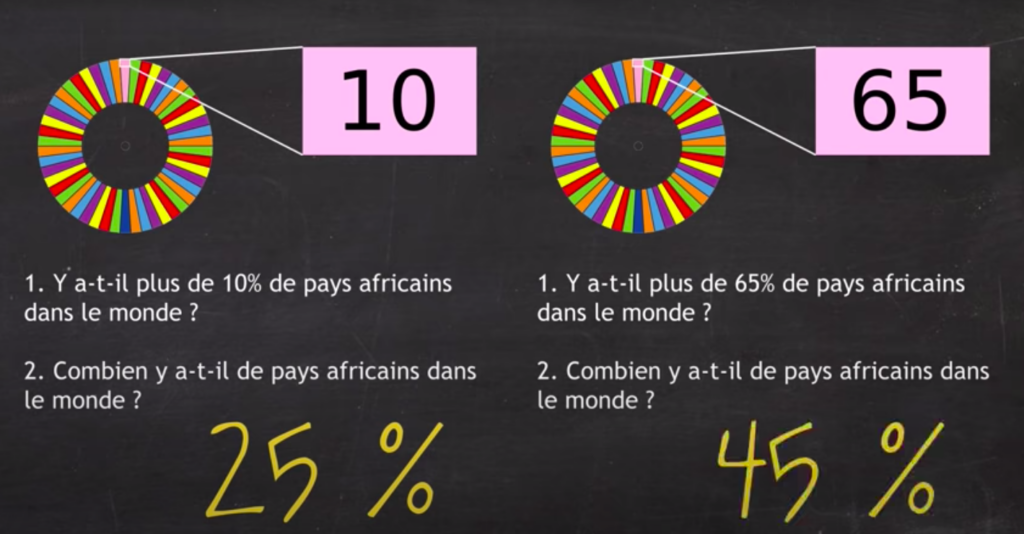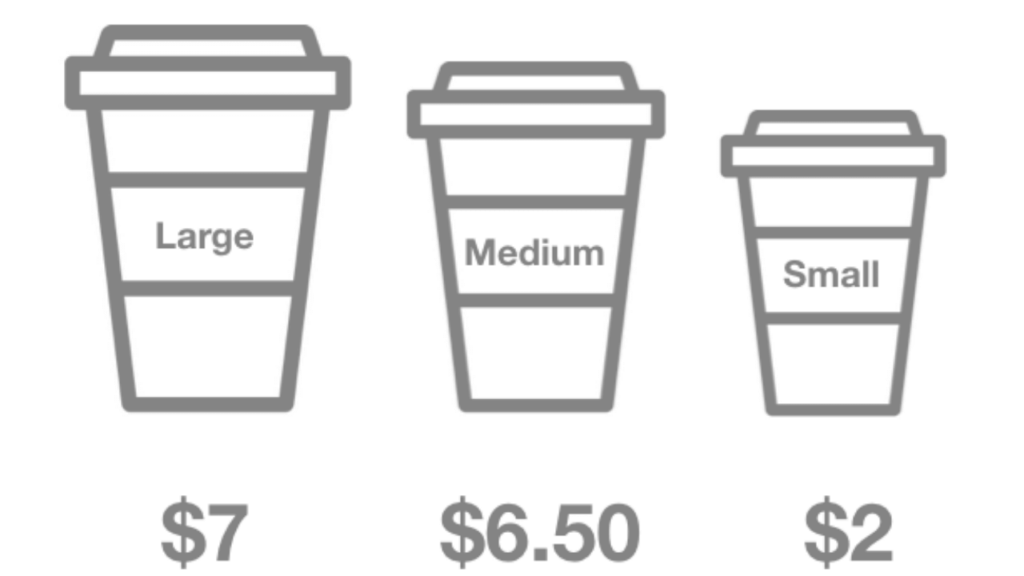# Quesaco cognitive biases?
Cognitive bias is a deformation of our brain that will repeatedly alter our judgment in a given situation. Decision-making will therefore be distorted. We are all affected by these biases on a daily basis. Often easy to detect in others, it is very complicated to perceive them at home.

#Why ?
Bias is neither logical nor rational thinking that will lead to rapid and automatic decision-making. The brain makes this twist to overcome various situations:
- the excess of information: the overload of information to analyze forces us to retain only the essentials. Our brain will store recently memorized elements as a priority.
- the need to act quickly: the simplest options will be favored over the most complex (or less mastered) for ease.
- the lack of meaning: the brain will therefore fill in the gaps, most often with the help of its stereotypes and beliefs.
- the limit of memory: the brain will come to deform our memory, modify it, give it more or less importance (positive or negative) and this is what we will remember later. As Daniel Kahneman explains in his book “System 1, System 2, the 2 speeds of thought”; in certain situations, system 1: fast, instinctive and emotional, takes precedence over system 2: slow and rational. The first acts 95% of the time while the second 5%.
#Relationship with UX
Cognitive biases play an essential role in UX in order to better conduct user research. They will help to understand the thinking of users and to anticipate the use of an application. Thus we will be able to propose an interface corresponding to its reasoning diagrams.
# Top 10
The Great Bias Families:
250 biases have been listed! We are not going to review them all here, but to address the most widespread. They fall into different categories.
- Sensory-motor biases, sometimes called illusions: related to the senses and motor skills. The brain poorly analyzes the information received.
- Attentional bias or attentional bias. Here the brain analyzes the information differently according to our concerns or areas of interest.
- Mnesic bias, that of “memory”. Very numerous, it is about the processing of memories: the way in which they can be modulated or truncated, in particular under the influence of affective states.
- Judgment bias. It is together is the richest. It will distort our way of judging and estimating the value of others. These biases are distinguished by their repetitive nature.
- Reasoning biases (or paradoxes). We happen to like to be right. This can lead us to prefer elements that confirm our hypotheses rather than having a scientific reasoning or we will seek to invalidate them to be certain of the veracity of our proposal.
- Personality biases: culture, language, social influence, etc.
#1 Confirmation bias
Definition :
It consists of wanting to confirm the hypothesis you are thinking of, rather than thinking scientifically and trying to invalidate our hypothesis to see if it works.
It is the fact of taking into consideration only the information which corresponds to our beliefs and discrediting all that will contradict it. Beware of this bias in the user research phase where there will surely be elements that are the opposite of what we were looking for at the base.
Experimentation :
Find here an interesting experience on this bias: https://www.youtube.com/watch?v=BN6OMU2HL5c&ab_channel=Apprendre%C3%A0%C3 %AAtrelibre
#2 The anchoring bias
Definition :
Use the first piece of information available as a reference and point of comparison with others. This information may be incorrect. The more precise the number, the stronger the anchor point.
This bias can also apply to the relational, we then speak of “first impression”.
Experimentation :
group A group B
 Source: Experience of Daniel kahneman and Amos Tversky: anchoring effect
Source: Experience of Daniel kahneman and Amos Tversky: anchoring effect
group A :
A wheel is spun in front of participants. The number 10 stands out.
We ask a closed question.
Then the open question next.
We then obtain the answer of 25%
group B :
A wheel is spun in front of participants. The number 65 stands out.
We ask a closed question.
Then the open question next.
We then obtain the answer of 45%
Conclusion:
It can be seen that the number, although drawn randomly in front of the participants' eyes, modified their response. It served as the anchor for the response. Even on the next open question, the anchor is still there.
#3 The decoy effect
Definition :
Add an option which is not intended to be chosen but to reinforce a twin option. This is a widely used bias in pricing.
Example:
It happens a lot in pricing. It is an option where there is not much at almost the same price as an option where we offer much more.
Source: https://creative-copywriting.fr/comment-la-psychologie-du-pricing-influence-nos-choix
#4 The Einstellung Effect
It's when the first idea that comes to mind, triggered by familiar features of a problem, gets in the way of finding a better solution.
Manage to break away from an already existing solution that we know. Even when several people are faced with this effect, they do not have the option to find any other solution. He explains that most often we can't get out of our comfort zone and that we struggle to find ideas to innovate or think differently.
The experiment conducted by Bilalic et al. in 2008 tested chess players of different levels. Showing them a ready-made solution at the top right of the chessboard. They were able to demonstrate that once the solution had been seen, the players' attention was totally mobilized, their gaze having great difficulty detaching themselves from this obvious and yet not the most optimal solution. This result was confirmed by Sheridan & Reingold in 2013.
#5 The peak-end effect
Definition :
An experience is judged on how it feels at its most intense and when it ends, rather than the average length of the experience. In UX we often think about how to reach this peak of intensity but we deal less with the descent.
If the experience is good, it doesn't matter if it lasts 1 minute or 1.30 minutes. If it's negative it's the same no matter if it lasts 30 seconds longer, the memory will be bad and at the same intensity. In this case, removing friction time will therefore not change the memory, and it will be as bad an experience as one that is 30 seconds shorter.
Source: By Kent Hendricks author in marketing and psychology
Example:
See water bucket experiment conducted by Daniel Kahneman and Barbara Frederickson: https://www.youtube.com/watch?v=uFIN0gwd0UI&t=100s&ab_channel=BigIdeasGrowingMi nds
#6 The (loss) aversion bias
Definition :
We are doubly more sensitive to loss than to gains, and this from the moment of our decision-making. This is the reason why some people will stay in their job because they are comfortable instead of challenging themselves elsewhere, or who hesitate to invest because the gain is possible but the loss too...
Example:
Here is an experiment conducted by psychology researchers Russell Poldrack and Craig Fox: predict their behavior.
Thinking about the possibility of making money activates some of the regions that are those activated by cocaine, chocolate, or a good face, Poldrack explains. These regions are called the “reward centers” and include the prefrontal cortex and the ventral striatrum.
Thinking about the possibility of losing money, rather leads to a deactivation of these regions. A surprising result of the research was that as the amounts of potential loss increased, parts of the brain involved in fear and anxiety, such as the amygdala and insula, were not activated. On the other hand, the level of deactivation of the "reward centers" increased.
Full article source: http://www.psychomedia.qc.ca/neuropsychologie/2007-08-17/deux-fois-plus-sensibles-aux-p ertes-qu-aux-gains-lors-de-prises-de-decision
#7 Negativity Bias
Definition :
It is the fact of retaining only the negative elements and almost ignoring the positives. Exaggerating your mistakes and minimizing your strengths is a negativity bias.
Example:
Henk Aarts and Ap Dijksterhuis, researchers from the University of Amsterdam, want to understand whether the brain analyzes positive or negative words better.
They perform an experiment to distinguish how the brain will analyze words.
They display crosses on the screen for half a second. After that, they display a negative or positive word or no word at all for 13 milliseconds.
55% of people will manage to find the negative words against 45% for the positive words. Our brain is therefore better able to recognize and analyze negative words. It therefore seems normal for newspapers to deal with news of anxiety and fear. This allows our brain to remain mobilized, as if there were danger. A more mobilized brain is more receptive.
Link to the study: http://twiki.cis.rit.edu/twiki/pub/MVRL/Faces/WildebeestsWordNegativeBias.pdf
#8 Authority bias
Definition :
Authority bias is the act of overestimating the opinion of a person who is considered to have authority on a given subject. This can be parents, doctors, scientists, and other specialists or experts. These people are supposed to be experts in their respective fields, and therefore their word is rarely questioned. This bias will take their opinion as a reference, not to contradict it even if sometimes we have doubts, or even to follow their recommendations.
Example:
The very famous experiment on obedience to authority in 1961 by Stanley Milgram illustrates this bias well.
See the study: https://www.youtube.com/watch?v=cBDkJ-Nc3Ig&ab_channel=PsychED
#9 Framing bias
Definition :
The brain will be naturally influenced by the framework through which information is delivered to it. The answer will be different depending on how the question or problem is stated; either positively or negatively.
The purpose will be the same but what will be changed is the perception that we will have of it, and this will influence our final decision.
Example:
It is a derivative of choice theory, developed by Amos Tversky and Daniel Kahneman in 1979. See below:
Here its application in framing or framing:
Source: thedecisionlab.com
#10 The Zajonc bias, or simple exposure effect
Definition :
It is the probability of a positive feeling towards someone or something by the mere repeated exposure to this person or this object. The more we are exposed to them, the more we tend to prefer them.
This bias is to be opposed to the scarcity effect which, when a product or a person becomes rare, it is given more value.
Examples:
# Try to compensate for these biases
Solution #1 Go beyond automation
When you have a ready-made solution, trying to take a step back can help. Formulating the problem in another way, approaching it from another angle can help you.
Solution #2 Teamwork
Putting the problem to someone else allows you to consider different points of view. Everyone has their own biases but we don't all have the same ones, so teamwork is very helpful.
Solution # 3
Reasoning on data, facts and not feelings.
Starting from concrete data will allow you to rely less on your feelings.
#Go further
#Delivered
System 1 / System 2 – Daniel Kahneman
#Download card games on cognitive biases
Bettina RIBLEUR, UI-UX Designer @UX-Republic
Our next trainings
STORYTELLING: THE ART OF CONVINCING # Paris
SMILE Paris
163 quay of Doctor Dervaux 92600 Asnières-sur-Seine
UX/UI ECO-DESIGN # Paris
SMILE Paris
163 quay of Doctor Dervaux 92600 Asnières-sur-Seine
DESIGN THINKING: CREATING INNOVATION # Belgium
UX-REPUBLIC Belgium
12 avenue de Broqueville - 1150 Woluwe-Saint-Pierre
MANAGING AND MEASURING UX # Paris
SMILE Paris
163 quay of Doctor Dervaux 92600 Asnières-sur-Seine
DESIGN SPRINT: INITIATION & FACILITATION # Paris
SMILE Paris
163 quay of Doctor Dervaux 92600 Asnières-sur-Seine
UX-DESIGN: THE FUNDAMENTALS # Belgium
UX-REPUBLIC Belgium
12 avenue de Broqueville - 1150 Woluwe-Saint-Pierre
GOOGLE ANALYTICS 4 #Paris
SMILE Paris
163 quay of Doctor Dervaux 92600 Asnières-sur-Seine
ACCESSIBLE UX/UI DESIGN # Belgium
UX-REPUBLIC Belgium
12 avenue de Broqueville - 1150 Woluwe-Saint-Pierre

















